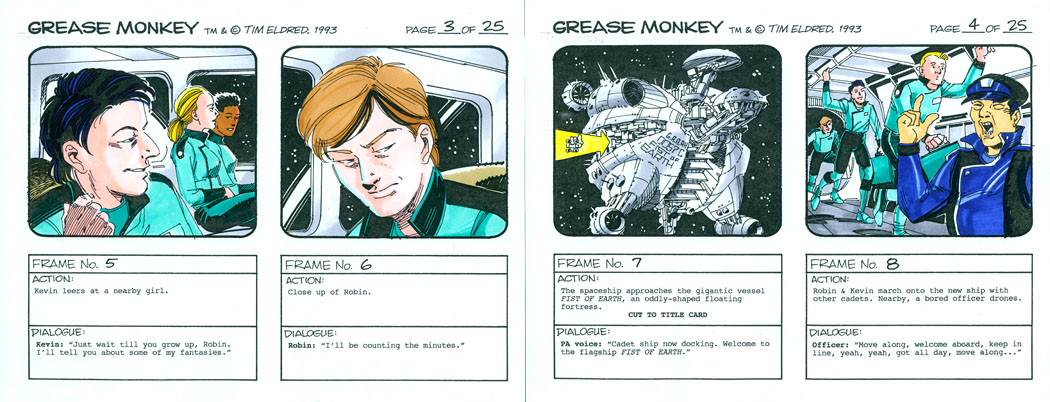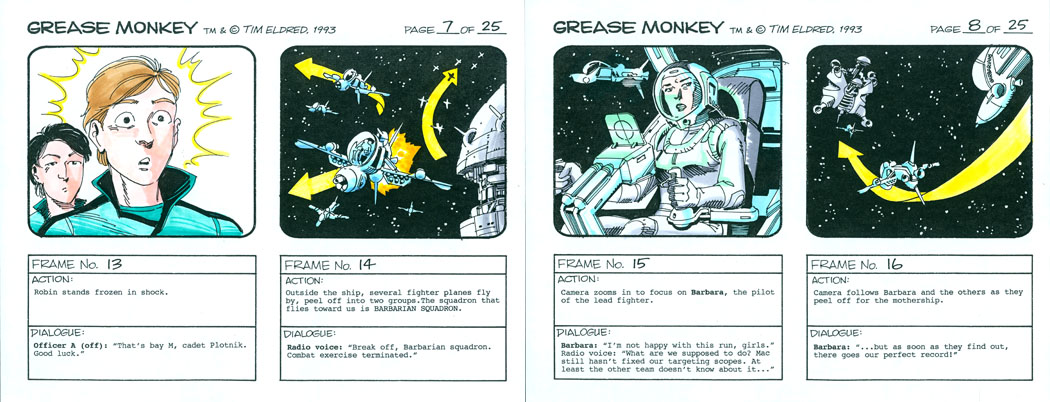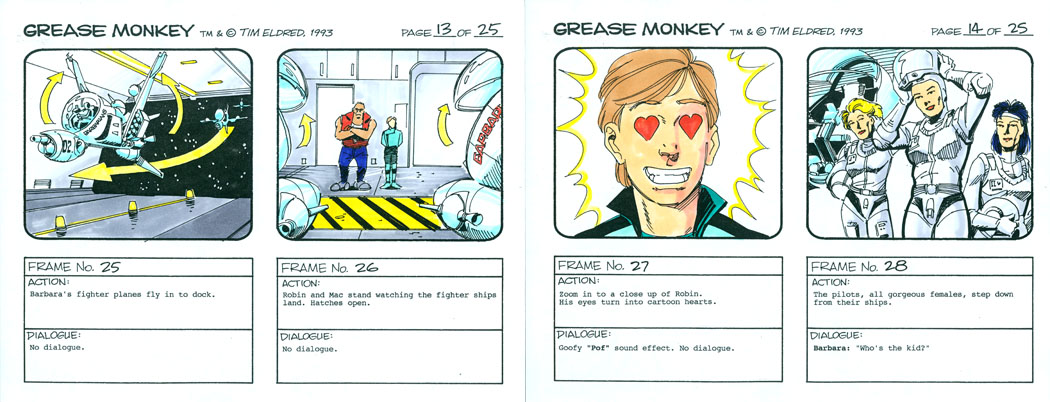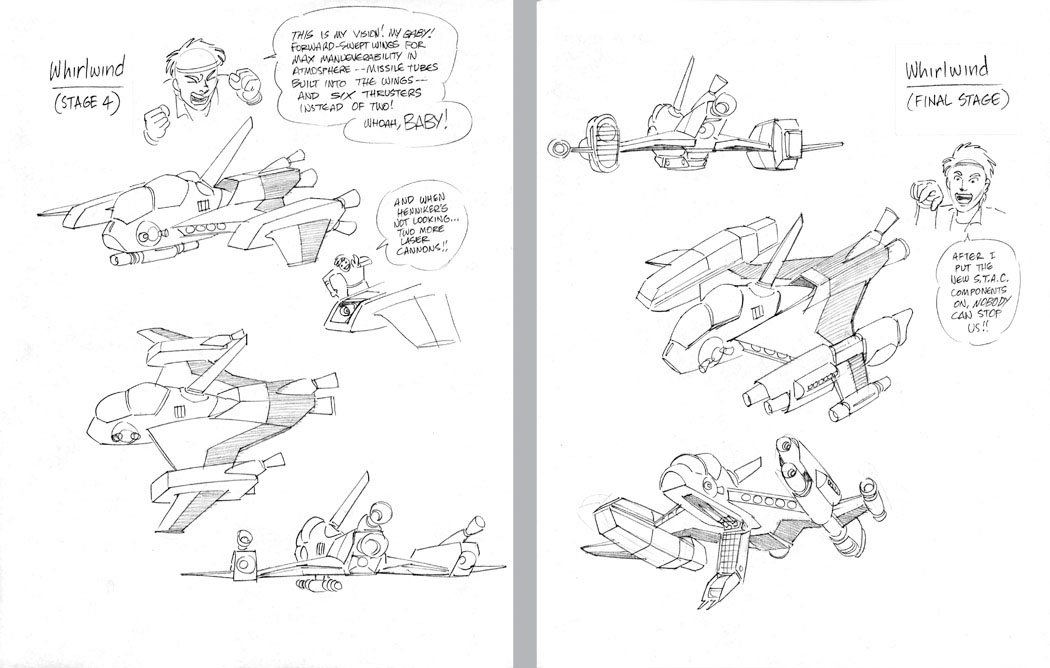There’s usually a big crossover between science-fiction, comics, and mecha, and right from the beginning I wanted Grease Monkey to be loaded with cool, high-tech space machinery. Here’s a deep dive into the mecha catalog for the story.
We visit various interiors of the Fist of Earth throughout the story. Here, we approach Bay M in the hangar deck section, home base for Barbarian Squadron.
When I started drawing Episode 1 of Book 1, all the backgrounds were literally made up on the spot. There was no attempt to lock them down into a specific geography – which made it a challenge later to figure out how the rooms actually fit together. All these drawings were done between Episodes 6 and 7.
After I wrote and drew Episodes 1-6, the series went through its animation development phase, during which time I wrote Episodes 7 and up. This is when I figured out how many different rooms Bay M would require, and how they should be laid out.
At left is the map I came up with, which had to reconcile the spaces I’d already drawn in Episodes 1-6. Fortunately, the puzzle fit together without having to alter any of the parts. At right is a crude CG model of the space based on the map.
And here is the finished Bay M in its entirety, with the CG wireframe as its foundation. The only thing it doesn’t show you is how the fighters get to their launch tubes. That’s a project for another day.
The F300 Space Superiority fighter was a lot of fun to work out, and I’ve never tired of it, even after drawing it hundreds of times from every conceivable angle.
In 2001, I took a beginner’s class in Maya, one of the world’s most popular CG modeling programs. We were allowed to choose our own personal project for the final evaluation, and since I’d always wanted to see if the F300 held up to full 3D scrutiny, that was my choice. The first step was to create the blueprint seen at right.
The blueprint itself was a joy to create and looked even cooler with a color treatment. Below is the end result of the class project. It’s not quite film-ready, but the structural integrity is as solid and precise as I’d hoped. Building it took about a month (a couple sessions a week), and I have since forgotten 90% of what I learned about Maya.
Find more mecha designs in the Grease Monkey animation pitch here.




















































